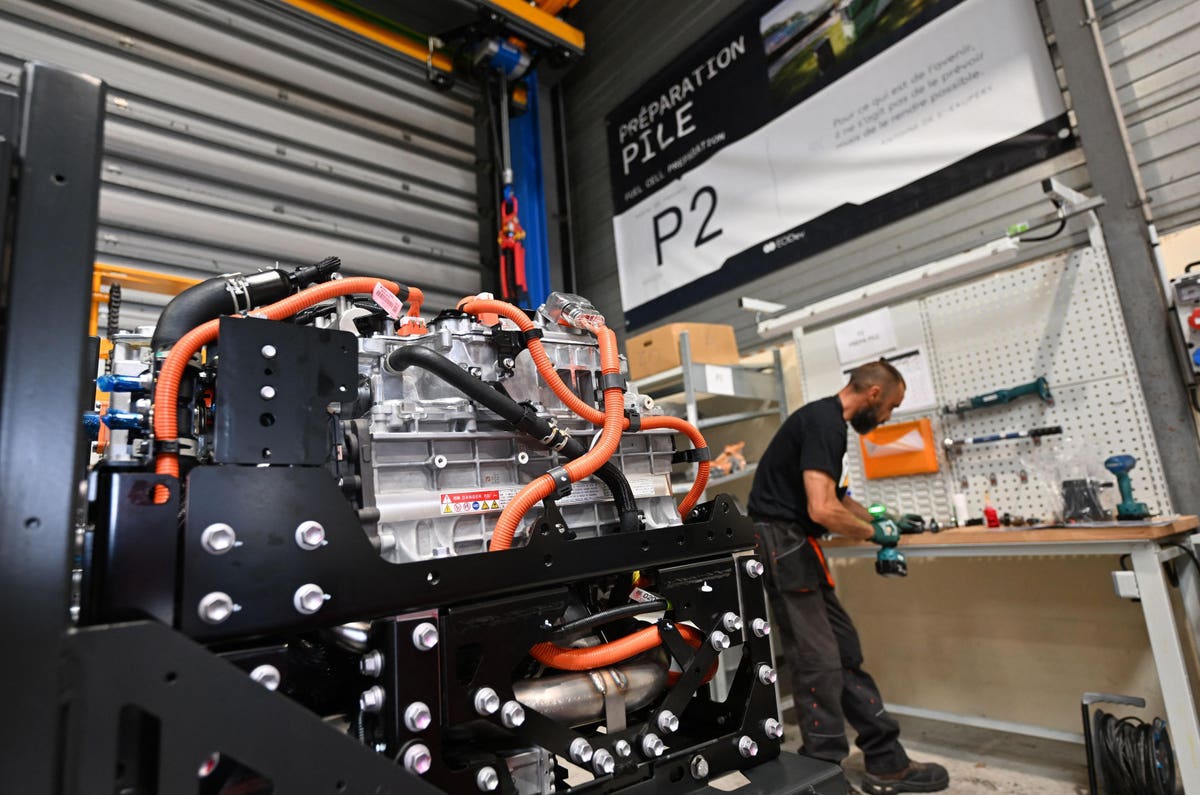One of the principle pillars of the Energy Transition is the use of hydrogen for specific industries like cement and steel manufacture that require temperatures that cannot be generated by electricity unlike, say, heat for buildings. While the prospect of utilizing hydrogen broadly throughout the economy by relying on existing natural gas pipelines seems far off, efforts are already being made to promote it in in localized uses like factories. This will be helped by tax credits, but the debate about how restrictive they should be could delay this.
Cue the peanut gallery. Bloomberg has already provided us with the usual suspect in “An Inside Look at Exxon’s White House Push to Subsidize Hydrogen From Gas” while the NRDC describes how “Four new resources were published recently that lock in the ironclad case for the Biden administration to issue rigorous guidance”. (sources below) The former apparently is adopting the homeopathic approach to policy-making—a policy’s virtue is decided by its association, and anything Exxon touches is by definition ‘bad.’ I disagree with that attitude, but nonetheless assume that Exxon’s stance is self-serving and should be treated as such, while still deciding the case on the merits. As for the NRDC’s belief in an ‘ironclad case,’ they are being quite naïve about the reliability of economic studies.
Still, aside from the more technical questions around the tax credits, the first consideration should be providing a stable regulatory environment if promoting hydrogen usage. I’ve often joked that when the renewables industry insists it needs regulatory stability they really mean subsidies, but that is somewhat disingenuous. Investment in wind and solar is booming globally, for example, there are often discontinuities when regulations change, including when subsidies like the PTC in the U.S. are about to expire. People rush to get projects underway before the deadline, but after subsidies are extended, the sector experiences a mild bust while the project backlog is worked off.
Two recent examples highlight the economic losses this creates. Some pork producers were caught off guard when California delayed implementation of animal welfare regulations for six months. As Trish Cook of the Iowa Pork Producers Association complained in the New York Times
NYT
Aside from the immediate losses for those who invested in response to the initial regulations, new investment is likely to be delayed for fear of additional changes. Admittedly, the fault lies less with the change in regulations than their bad initial design. Targets were set based on political pressures, not realistic expectations of success. Or cost-benefit analysis, in all likelihood.
If you think this is a new problem, consider the lesson of the Orange Man. No, not that one, but William of Orange who carried out the Glorious Revolution in England in 1688. The English Civil War which led to the ousting and execution of Charles I was partly religious in nature, but much more about the relative power of the monarch versus the legislature. A side effect of that was the tendency for each to set taxes that were then modified when a new monarch came to power (Charles II, then James II) or a new Parliament was seated. The ascension of William of Orange to the throne saw the issue resolved with both sides agreeing to a unitary fiscal regime, which contributed to the subsequent English economic boom. Geoffrey Parker’s Global Crisis describes how private investment in roads and waterways quintupled after regulatory stability was introduced.
Now, there is a battle over the tax breaks available for hydrogen producers in the United States, based on the idea that power from existing projects used to create hydrogen should not get the tax credits, only power from new projects. This is somewhat reminiscent of the oil and gas price controls in the 1970s, when ‘new’ production got higher prices than ‘old’ production, creating near-endless tangles over the definitions.
My expectation is that hydrogen consumers and renewable power projects will both seek to game the system. Essentially, any new renewables project can claim the tax credit even if it was not intended for hydrogen production because electrons are fungible. When a wind turbine puts power into the grid, the hydrogen-producer buyer will not get those particular electrons: the contract is the only connection between producer and consumer. Cue the lawyers.
The problem of regulatory uncertainty is exacerbated by the failure of politicians, regulators and many interest groups to treat regulations, and regulatory uncertainty, as cost-free. Too many cases exist where regulations were imposed, industry (and sometimes individuals) spent money to meet them, only to find the regulations postponed, modified, or even rescinded. That was the case in California in the 1990s, which mandated sales targets for zero emission vehicles, then abandoned them.
Similarly, efforts to promote hydrogen usage in industry are likely to be delayed while the battle over restrictions like additionality which are more idealistic than realistic. By pushing for the whole loaf, advocates will instead get less than half a loaf.
IRA Clean Hydrogen Tax Credit: Debunking Five Myths (nrdc.org)
An Inside Look at Exxon’s White House Push to Subsidize Hydrogen From Gas – Bloomberg
Read the full article here





